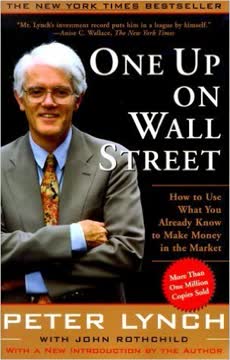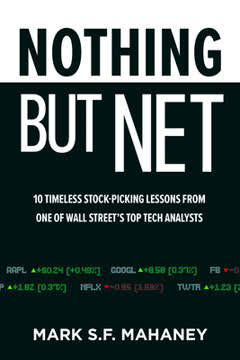Key Takeaways
1. Expect Inevitable Losses, Even with the Best Intentions
There will be hours, days, months, and even quarters when one or even all of your initial investments will turn negative, either because of market shocks or because even “sure thing” stocks can trade off 70%+.
Market volatility. Investing in the stock market inherently involves risk, and losses are an unavoidable part of the journey. Even with thorough research and a strong understanding of fundamentals, external factors like market-wide corrections (e.g., the Covid-19 crash in early 2020) can cause even sound investments to decline significantly. A good stock-picker must be both a skilled fundamentalist and a keen psychologist, accurately forecasting both company performance and market sentiment.
Bad picks happen. The author's own career, despite decades of experience, includes several "terrible calls" on stocks like Blue Apron, Zulily, and Groupon. These examples highlight how even seemingly promising companies can fail due to:
- Weak management or high turnover (Blue Apron)
- Insufficient customer value proposition (Zulily's slow shipping, no returns)
- Overstretching into too many markets or product categories (Groupon)
Such failures underscore the need for humility and resilience in investing.
Grit is essential. Successful investing requires the ability to tolerate setbacks and learn from mistakes. The market is unpredictable, and no one can consistently forecast the future perfectly. Accepting that "there will be blood" from time to time, whether due to market forces or individual stock missteps, is crucial for maintaining a long-term perspective and avoiding emotional, reactive decisions.
2. Patience is Paramount: Even Top Stocks Face Major Pullbacks
Even the best stocks can suck at times.
Inevitable corrections. Even the most successful, "best-in-class" tech stocks like Facebook, Netflix, Google, and Amazon have experienced significant, painful pullbacks. For instance:
- Facebook: A 43% drop in 2018 due to self-inflicted guidance cuts.
- Netflix: Two major corrections (44% in 2018, 34% in 2019) due to subscriber misses and competitive fears.
- Google: A 20% drop in 2019 after its first sub-20% revenue growth quarter in years.
- Amazon: A 32% decline in late 2018, caught in a broad market sell-off.
These examples demonstrate that no stock is immune to volatility, regardless of its underlying strength.
Temporary dislocations. These sharp declines, often lasting a few months, create "Dislocated High-Quality" (DHQ) opportunities for patient investors. While the immediate impact is painful, the underlying fundamentals of these companies often remain strong. For example, Amazon's fundamentals didn't change during its 2018 pullback, yet the stock lost a third of its value.
Long-term rewards. Investors who held through these periods of "sucking" were ultimately rewarded with dramatic outperformance. The key is to understand that short-term stock movements can be "meaningless" noise, often disconnected from a company's long-term trajectory. Resilience and a long-term view are essential to capitalize on the growth potential of high-quality companies.
3. Avoid Short-Term Trading; Focus on Long-Term Fundamentals
Don’t play quarters, because successfully trading around quarters requires both an accurate read of fundamentals and (more importantly) a correct assessment of near-term expectations, a tricky task for individual (and most professional) investors to pull off.
Fool's errand. Attempting to profit from short-term stock movements around quarterly earnings reports is often a "fool's errand." The market's reaction to earnings is heavily influenced by "whisper expectations" and can be misleading. A company might beat estimates and still see its stock fall (e.g., Snap in Q1 2019, Chewy in Q3 2020), or external events like IPO lockup expirations can overshadow positive news (e.g., Uber in November 2019).
Data disadvantage. Individual investors are at a significant disadvantage when trying to "call quarters." Professional funds have access to expensive, real-time data (credit card, web traffic, user surveys) that provides a much clearer picture of quarterly performance and market expectations. Relying on such short-term bets without this information is akin to gambling.
Missed opportunities. Focusing on short-term volatility can distract from the bigger picture and lead to missed long-term investment opportunities. Amazon, for instance, experienced significant one-day pops and drops around earnings between 2015-2018, but simply staying invested yielded far greater returns. The author advises:
- Invest in names with strong fundamentals.
- Ignore short-term stock fluctuations.
- Recognize that short-term price action is often just noise.
4. Revenue Growth is the Ultimate Driver for High-Growth Tech Stocks
Over the long term, fundamentals really do move stocks, and for tech stocks, the fundamentals that matter most are revenue, revenue, and revenue.
The 20% rule. For high-growth tech companies, consistent revenue growth of 20% or more is the most critical fundamental indicator. This "rare-air growth" is:
- Achieved by only about 2% of S&P 500 companies consistently over five years.
- Often 4-6 times faster than global GDP growth.
- A strong predictor of future stock outperformance, even if profitability is initially low or negative.
Examples like Priceline and Netflix demonstrate how sustained premium revenue growth, even with rising cash flow losses (Netflix for a decade), can drive extraordinary stock returns.
Why revenue trumps profits (initially). While earnings and cash flow are ultimately essential, revenue is a leading indicator. Public markets reward companies that generate earnings through growth, not just cost-cutting or "financial engineering." Higher growth rates typically lead to higher valuation multiples. When revenue growth decelerates significantly (e.g., by 50% in a year), it's a major red flag, as seen with eBay and Yahoo!, whose stocks stagnated despite consistent profitability.
Growth Curve Initiatives (GCIs). Investors should look for companies actively pursuing GCIs—steps to accelerate revenue growth. These include:
- Price increases (e.g., Netflix, Amazon Prime)
- Geographic market expansion
- New product introductions
Successful GCIs can lead to revenue acceleration, margin expansion, and a re-rating of the stock's multiple, creating significant upside.
5. Relentless Product Innovation Fuels Sustainable Growth
Successful product innovation is one of the biggest drivers of fundamentals, especially revenue growth, and that’s what drives stocks.
Innovation wins. Product innovation is a core driver of revenue growth and, consequently, stock performance. It can:
- Generate entirely new revenue streams (e.g., Amazon Web Services, now a multi-billion dollar business).
- Replace existing revenue streams (e.g., Netflix's pivot from DVDs to streaming).
- Enhance existing services and boost customer metrics (e.g., Spotify's podcasting, Stitch Fix's direct buy features).
Amazon's AWS, Kindle, and Prime are prime examples of how continuous innovation, even in seemingly "boring" or "expensive" areas, can create immense long-term value.
Spotting innovation. Product innovation is often "spottable," especially for consumer-focused tech companies. Investors can:
- Try out services themselves: If you love a new app or feature, it could be a great stock idea (e.g., author's experience with Stitch Fix, Chernobyl podcast on Spotify).
- Observe copycats: When competitors aggressively copy a company's features (e.g., Facebook copying Snap's Stories), it's a strong indicator of legitimate innovation.
Conversely, a lack of consistent innovation, as seen with Twitter's early struggles with ad tools and app redesigns, can hinder growth and stock performance.
Repeatable offense. Companies with a history of successful product innovation often possess the culture, processes, and management to continue innovating. Amazon's ability to launch multiple distinct, successful businesses (retail, cloud, devices) demonstrates this. This "repeatable offense" provides confidence that a management team can adapt and create future growth, making past innovation a strong indicator of future success.
6. Large Total Addressable Markets (TAMs) Unlock Massive Potential
TAM matters. The bigger the total addressable market, the greater the opportunity for premium revenue growth, which is a major driver of tech and growth stocks.
Growth runway. A large Total Addressable Market (TAM) is crucial for sustaining premium revenue growth, especially as a company scales. Google, for instance, could maintain 20%+ revenue growth for a decade even after reaching $100 billion in revenue because it operates in a trillion-dollar global advertising market. This rare feat, "pulling a Google," is only possible with an exceptionally large TAM.
Expanding TAMs. Companies can expand their TAMs by:
- Removing friction: Making services easier, faster, or cheaper (e.g., Google search, Uber's ride-hailing).
- Adding new use cases: Expanding service offerings (e.g., Uber's move into Eats and Freight, DoorDash's potential expansion into groceries).
- Geographic expansion: Entering new international markets (e.g., Uber's global presence, Netflix's worldwide streaming).
These strategies allow companies to tap into broader customer bases and revenue streams, pushing their growth potential beyond initial estimates.
Scale benefits. Large TAMs, when successfully captured, lead to significant scale, which offers intrinsic benefits:
- Experience curves: Greater volume leads to increased efficiency and expertise.
- Unit economics advantages: Fixed or step-fixed costs are spread over a larger revenue base, improving margins.
- Competitive moats: Size makes it harder and more expensive for new competitors to enter (e.g., Netflix's content spend).
- Network effects: The value of a service increases with more users (e.g., Uber's rider/driver network).
These advantages reinforce a company's market position and long-term growth prospects.
7. Prioritize Compelling Customer Value Propositions Over Profit-Centric Models
Companies with compelling customer value propositions beat companies with great business models, in terms of both market share and market cap.
Consumer-centric wins. Companies that relentlessly focus on creating superior customer value propositions, even at the expense of near-term profitability, often emerge as long-term winners. The classic example is Amazon versus eBay:
- Amazon: Prioritized "customer obsession" and invested heavily in services like Prime (expensive near-term, but built immense loyalty).
- eBay: Focused on preserving its high-margin marketplace model, but eventually lost market share and market cap to Amazon's superior consumer experience.
This pattern repeated with DoorDash, which aggressively built out restaurant supply and delivery logistics (costly) to win market share from Grubhub, which initially prioritized its "lucrative" but limited business model.
Pricing power flywheel. A strong customer value proposition can lead to "pricing power," allowing companies to raise prices without losing customers. This creates a virtuous cycle:
- Price increases generate more revenue.
- This revenue is reinvested to further improve the product/service.
- The enhanced value proposition justifies future price increases.
Amazon Prime and Netflix streaming are prime examples, successfully raising prices multiple times while continuing to accelerate subscriber growth, demonstrating the power of a deeply valued service.
Strategic pivots. Even established companies with profitable but potentially limiting business models may need to pivot towards a more customer-centric approach. Zillow's move into direct home-buying (iBuyer) was a risky, capital-intensive shift from its high-margin advertising model. While initially punished by the market, such pivots, if successful, can unlock massive new TAMs and long-term growth by addressing fundamental consumer pain points.
8. Exceptional Management Teams Are the Bedrock of Success
In the long term, stocks are driven by fundamentals, and fundamentals are largely driven by management teams.
The CEO factor. The quality of a company's management team is arguably the single most important factor in tech investing. Great management drives:
- Consistent premium revenue growth.
- Successful product innovation.
- Strong customer satisfaction and loyalty.
Almost all of the most successful tech stocks (Amazon, Apple, Facebook, Google, Netflix, etc.) have benefited from extraordinarily effective management, often led by their founders for extended periods.
Key characteristics. Investors should look for management teams exhibiting several critical traits:
- Founder-led: Often possess a unique vision, long-term commitment, and willingness to defy short-term market pressures (e.g., Bezos with Prime, Zuckerberg with investment plans, Hastings with Qwikster).
- Long-term orientation: Focus on multi-year goals rather than quarterly results.
- Great industry vision: Ability to foresee and shape future market trends (e.g., Hastings predicting streaming's mass appeal).
- Maniacal customer focus: Obsession with satisfying customer needs (e.g., Amazon's "Obsess Over Customers").
- Deep tech backgrounds: Founders with strong technical expertise (e.g., Page, Brin, Musk).
- Candor: Willingness to acknowledge mistakes and challenges publicly (e.g., Hastings' Qwikster apology, Bezos admitting Pets.com errors).
Past performance matters. Unlike investment funds, a management team's past success in driving fundamentals is a strong indicator of future performance. When a team has consistently delivered growth, innovation, and customer satisfaction, it's a good reason to stick with them, even through periods of market skepticism or self-inflicted setbacks.
9. Valuation is Growth-Adjusted and Contextual, Not Simply "Expensive"
Valuation should not be the most important factor in the stock-picking decision process.
Growth justifies premium. Tech stocks often appear "expensive" with high P/E multiples, but this is usually justified by their superior growth rates. Valuation must be growth-adjusted; a 20x P/E for a 20% EPS grower is different from a 20x P/E for a 10% EPS grower. High-quality earnings, driven by revenue growth and margin expansion, warrant higher multiples. Stocks trading at a discount to their premium growth rates (e.g., 20x P/E for a 30% EPS grower) can be excellent long-term investments.
Valuing minimal or no earnings. For companies with minimal or no current earnings (common for many tech IPOs like Uber or Lyft), traditional P/E ratios are less useful. Investors must ask:
- Are current earnings depressed by aggressive, strategic investments? (e.g., Netflix's content spend, Amazon's AWS build-out).
- Can long-term operating margins significantly expand? (e.g., Amazon's mix-shift to higher-margin AWS/advertising).
- Can the company sustain premium revenue growth for a substantial period?
Positive answers to these questions can justify seemingly "sky-high" valuations, as seen with Netflix and Amazon's multi-decade outperformance despite initial or sustained negative free cash flow.
Logic tests for profitless companies. When a company has no earnings, four logic tests can help assess its profitability potential:
- Are there profitable public companies with similar business models? (e.g., Facebook for Pinterest, Snap, Twitter).
- Are there profitable segments within the business? (e.g., Uber's Rides segment).
- Can scale drive the business to profitability? (e.g., Redfin's cohort gross margin improvement).
- Are there concrete steps management can take to achieve profitability? (e.g., Uber's cost-cutting under new CEO).
These tests provide confidence that a "story stock" can eventually become a profitable one, making its valuation "ballpark reasonable."
10. Hunt for Dislocated High-Quality (DHQ) Stocks for Optimal Returns
One of the best ways to make money as an investor in high-growth tech stocks is to identify the highest-quality companies and then to buy them or add to positions when they are dislocated.
The DHQ strategy. The most effective strategy for investing in high-growth tech stocks is to identify "Dislocated High-Quality" (DHQ) companies. This approach combines:
- Reduced fundamentals risk: Investing in high-quality companies with consistent premium revenue growth, large TAMs, relentless product innovation, compelling customer value propositions, and great management.
- Reduced valuation/multiple risk: Buying these companies when their stocks are "dislocated."
Dislocations typically involve a 20-30% stock correction or when a stock trades at a significant discount to its growth rate (e.g., PEG ratio < 1).
Dislocations are inevitable. Even the highest-quality tech stocks (Amazon, Facebook, Google, Netflix) experience dislocations, often every couple of years. These periods, though painful, offer prime buying opportunities for patient, long-term investors. For example:
- Facebook's 43% drop in 2018 created a DHQ opportunity, leading to a 65% return in 12 months.
- Netflix's 34% drop in 2019 offered another DHQ, yielding a 51% return in five months.
- Uber's 64% crash in March 2020, despite its "partial quality" status, led to a 244% rebound by year-end.
The key is to recognize the underlying quality and act when the market presents a temporary discount.
When to sell. The primary indicator to sell a high-growth tech stock is a material deterioration in its fundamentals. Specifically, this means:
- Revenue growth decelerates rapidly (e.g., 50% cut within a year, adjusted for macro shocks).
- Revenue growth consistently dips below 20% (adjusted for macro shocks).
Examples like Tripadvisor, Yelp, TrueCar, Criteo, and Shutterstock show how sharp revenue deceleration leads to prolonged stock underperformance. "Growth thrills. (Substantial) Deceleration kills."
Last updated:
Review Summary
Nothing But Net receives mixed reviews, with an average rating of 3.77/5. Readers appreciate its focus on tech stocks and growth investing principles, backed by case studies of successful companies. Many find it accessible and insightful for understanding internet stock valuations. However, some criticize its shallow analysis, hindsight bias, and lack of specific investment recommendations. The book's emphasis on revenue growth, product innovation, and total addressable market is praised, but its relevance in the current economic climate is questioned.
Similar Books










Download PDF
Download EPUB
.epub digital book format is ideal for reading ebooks on phones, tablets, and e-readers.





